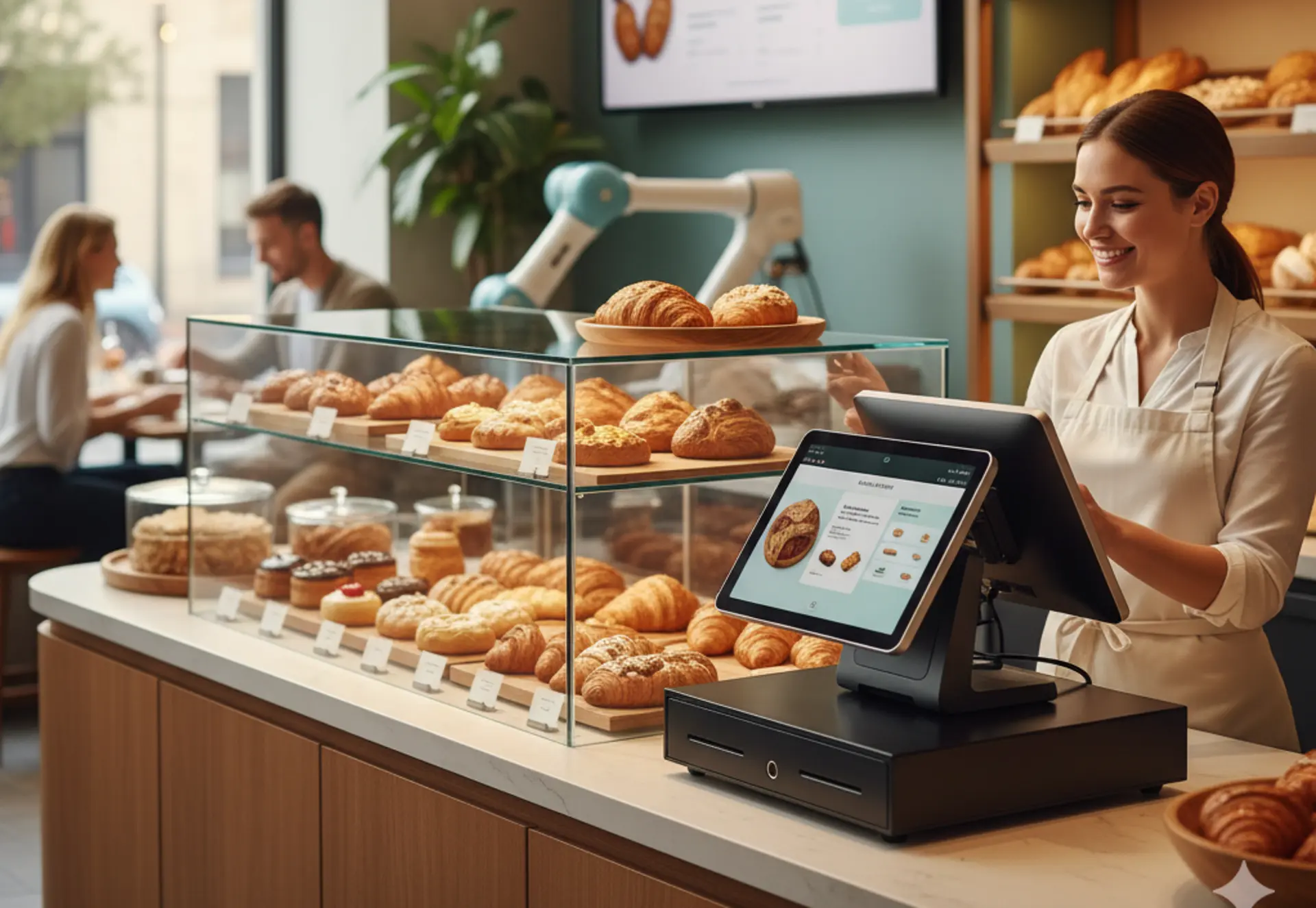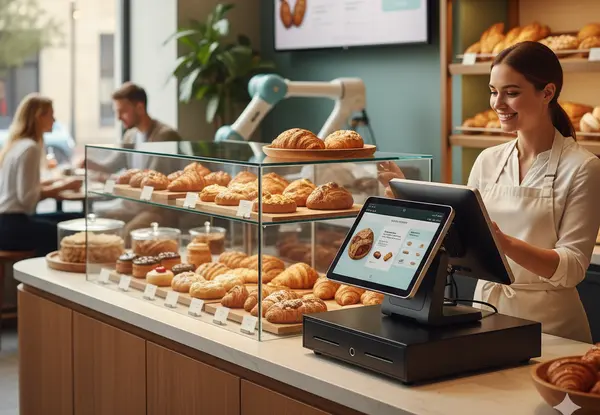
Bakery Tech: The 4-Step Investment Formula
The current wave of AI and digital transformation has left many bakery owners feeling anxious: “Should I invest in new technology, and how can I possibly make the right choice?”
The technology marketplace feels like an endless, overwhelming sea of tools. The options are limitless, and it’s impossible to know what truly aligns with your specific operational needs.
Fortunately, there’s a universal piece of digital wisdom we can leverage to cut through the confusion. Just last month (August 2025), Google released its “Universal AI Prompting Formula.” This methodology was designed to help users engage Large Language Models (LLMs like Gemini or ChatGPT) more efficiently, ensuring they get precise, high-quality results immediately 1.
That same “formulaic mindset”—the power of defining your core parameters first— is the key to smart investment. If you’re struggling to filter through the noise, ditch the indecision and use this simple “Four-Step Formula.” It will help you move past “blindly chasing trends” and make a precise choice for the perfect solution.
Step 1: Define Your User (The “Who”)
Before you evaluate features, you must identify the primary user of the technology. This decision drives the entire selection process.
- The Staff: If your team is the main user, prioritize simplicity and speed. The system must be intuitive, require minimal training, and integrate seamlessly into daily operations. If it slows your team down, it’s the wrong fit.
- The Owner/Manager: If you’re the main consumer of the data, focus on reporting and control. You need clean, actionable dashboards for inventory, sales, and employee performance—not just basic transaction processing.
- The Customer: For customer-facing tools (like ordering apps or kiosks), the non-negotiables are speed, reliability, and ease-of-use. The goal is frictionless convenience.
💡 Key takeaway: Know your audience. A system designed for a manager’s analytics will frustrate a cashier, and vice versa.
Step 2: Pinpoint the Pain Point (The “Why”)
Too many businesses adopt tech out of obligation (“everyone else has it”). This is a recipe for wasted investment. Smart tech adoption starts with a clear, defined problem.
Ask yourself: What specific operational failure or bottleneck are you trying to eliminate?
- Is the line too long during the morning rush? (Goal: Increase transaction speed.)
- Is staff spending too much time on manual inventory counts? (Goal: Reduce labour costs/boost efficiency.)
- Are repeat customers hard to track and reward? (Goal: Improve customer loyalty/retention.)
💡 Key takeaway: If you can’t articulate the problem in one sentence, you haven’t defined the goal. Don’t buy features; buy solutions.
Step 3: Acknowledge Your Context (The “Where”)
Technology must fit your physical and operational reality. A system built for a high-volume chain won’t work for a small, single-location artisanal shop.
Consider your specific environment:
The technology has to work within the confines of your physical location and operations. Take a hard look at your actual setting:
- Volume & Space: Do you need bulky hardware that clogs up counter space, or a lean, cloud-based solution?
- Peak Time Dynamics: Are you a commuter shop that needs instant, grab-and-go speed, or a sit-down café with more complex table service needs?
- Staff Turnover: High turnover means training must be minimal and extremely rapid.
💡 Key takeaway: Small operations generally need time-saving simplicity; large operations need scalable standardization and robust reporting. Match the complexity of the tool to the reality of your shop.
Step 4: Determine the Delivery Method (The “What”)
Finally, assess the various forms the solution can take and how they integrate with your existing setup.
- Software Solutions: (Cloud POS, loyalty CRM, mobile apps, and AI recognition solutions). These often offer flexibility, cost-efficiency (especially with AI software leveraging existing hardware), but require excellent network stability and robust data integration.
- Hardware-Centric Solutions: (Dedicated self-service kiosks, robotic arms for specific tasks, smart display shelves). These offer significant speed gains or automation but require a physical footprint and a more substantial capital investment for the specialized equipment.
- Consulting & Data Services: (Customer behavior analytics, custom integration). These offer strategic insights but require an ongoing service budget.
💡 Key takeaway: Assess the total cost of ownership, including maintenance, updates, and most critically, integration. Can this new piece of tech “talk” to your existing systems?
The Bottom Line: Tech as a Service Multiplier
When combined, these four steps create a reliable compass for digital investment:
User (Who) + Goal (Why) + Context (Where) + Format (What)
=The Ideal Tech Solution
The ultimate purpose of AI and new technology is to multiply your operational efficiency. For a bakery, this is crucial. Your true value lies in the quality of your product and the human element of service.
By implementing technology that prioritizes and supports your staff, you free them from tedious manual tasks. This gives your team the capacity and headspace to dedicate themselves fully to the customer experience—resulting in better service, higher customer satisfaction, and a more profitable business.

[Reference]
1 〈Google公布AI提示萬用公式!掌握「21字黃金法則」:先穩80分基本功再求好〉數位時代。https://www.bnext.com.tw/article/84076/ai-prompt-gemini-for-workspace.

